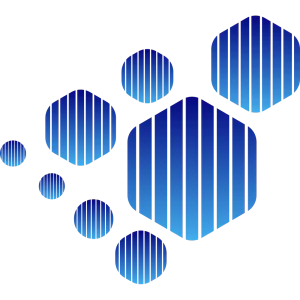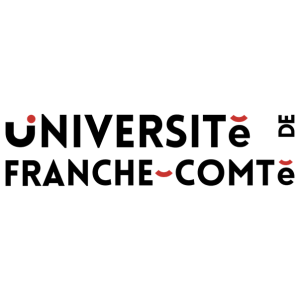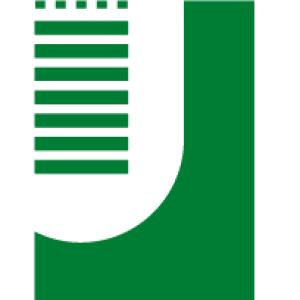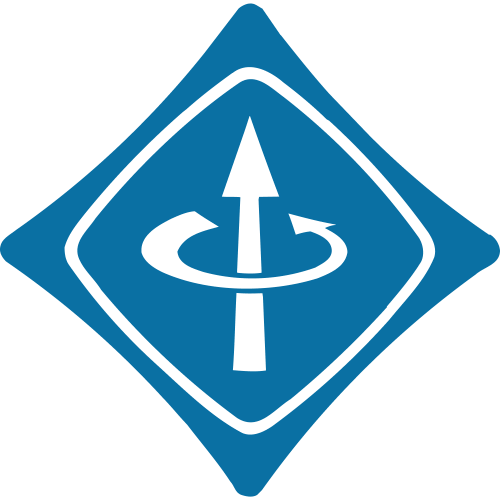Chemical imaging: I. Concepts and visions for electronic and bioelectronic noses 1 Presented in part
Publication type: Journal Article
Publication date: 1998-09-01
wos Q1
SJR: —
CiteScore: —
Impact factor: 7.7
ISSN: 09254005
Materials Chemistry
Metals and Alloys
Surfaces, Coatings and Films
Electronic, Optical and Magnetic Materials
Condensed Matter Physics
Electrical and Electronic Engineering
Instrumentation
Abstract
Perfect ‘chemical imaging’ aims at the time- and spatially-resolved recording of many chemical species. Comparison of results from ‘chemical imaging’ with calibration data may also be trained towards an identification of odor impressions, environmental or medical conditions (such as toxicity), process control parameters etc. This ‘chemical imaging’ can be approached by either using the well-established techniques of analytical chemistry or by using a large number of calibrated sensors and sensor systems. The latter are sometimes denoted ‘electronic noses’, provide an electronic approach to artificial olfaction and are considered in this paper. They offer a variety of principal advantages including the fact that calibration efforts and sizes can be minimized systematically for specific applications by fine-tuning individual components of the sensor system. The paper describes a systematic to design such sensor systems. In the traditional application of chemical sensors the output of an individual chemical sensor is recorded as one ‘feature’. The first aim towards perfect ‘chemical imaging’ is to determine a large number of independent features, which span a large ‘hyperspace of chemical features’. The second aim is then to extract information from this hyperspace by optimizing a feature extraction procedure towards four application-specific goals. (a) The first goal concerns to record certain chemical species quantitatively and hence aims at perfect ‘chemical imaging’ as defined above. (b) Alternative goals concern to record odor impressions, (c) environmental or medical conditions, (d) and process control parameters. Different kinds of calibration are wanted to extract the wanted information from the data represented in the hyperspace of chemical sensor features. Hence, four different strategies are required to compare the features monitored by the chemical sensor systems with independent calibration standards from (a) instruments in analytical chemistry, (b) human odor panels, (c) (micro-)biological or medical tests, (d) and process parameter measurements. This adjustment of measured sensor features to calibration standards determines a specific type of feature extraction and pattern recognition for a specific application. This pattern recognition of experimentally recorded features is of key importance not only for these ‘electronic’ noses but occurs in the same way in all real ‘biological’ noses. Hence, formal analogies between the technical and biological world of noses are obvious. It is therefore expected, that our current studies on chemical sensor systems will also lead to a deeper understanding of signal processing in biological sensor systems and vice versa. Expected synergies of comparative studies concern in particular the molecular scale understanding of (a) the elementary processes of chemical sensing, (b) human odor perception, and (c) interactions between the environment and biological organisms. In this context, biolectronics becomes an increasingly important discipline. By taking advantage of characteristic similarities and differences of components in technical and biological systems, high-performance hybrid systems will be developped in the future.
Found
Nothing found, try to update filter.
Found
Nothing found, try to update filter.
Top-30
Journals
|
5
10
15
20
25
30
35
40
|
|
|
Sensors and Actuators, B: Chemical
38 publications, 28.15%
|
|
|
Biosensors and Bioelectronics
4 publications, 2.96%
|
|
|
Analytical Chemistry
4 publications, 2.96%
|
|
|
Chemical Reviews
4 publications, 2.96%
|
|
|
Applied Physics Letters
3 publications, 2.22%
|
|
|
Measurement Science and Technology
2 publications, 1.48%
|
|
|
Materials Science and Engineering C
2 publications, 1.48%
|
|
|
The Analyst
2 publications, 1.48%
|
|
|
IEEE Sensors Journal
2 publications, 1.48%
|
|
|
Clinical Chemistry and Laboratory Medicine
2 publications, 1.48%
|
|
|
Langmuir
1 publication, 0.74%
|
|
|
Journal of Applied Physics
1 publication, 0.74%
|
|
|
Thin Solid Films
1 publication, 0.74%
|
|
|
Computers and Chemical Engineering
1 publication, 0.74%
|
|
|
Uspekhi Fizicheskih Nauk
1 publication, 0.74%
|
|
|
International Journal of Neural Systems
1 publication, 0.74%
|
|
|
Journal of the Electrochemical Society
1 publication, 0.74%
|
|
|
Asia Pacific Business Review
1 publication, 0.74%
|
|
|
International Journal of Distributed Sensor Networks
1 publication, 0.74%
|
|
|
Sensors
1 publication, 0.74%
|
|
|
Measurement Techniques
1 publication, 0.74%
|
|
|
KN - Journal of Cartography and Geographic Information
1 publication, 0.74%
|
|
|
Journal of Thermal Analysis and Calorimetry
1 publication, 0.74%
|
|
|
Sensing and Instrumentation for Food Quality and Safety
1 publication, 0.74%
|
|
|
Materials Today: Proceedings
1 publication, 0.74%
|
|
|
Journal of Physics: Conference Series
1 publication, 0.74%
|
|
|
Sensing and Bio-Sensing Research
1 publication, 0.74%
|
|
|
Procedia Engineering
1 publication, 0.74%
|
|
|
TrAC - Trends in Analytical Chemistry
1 publication, 0.74%
|
|
|
5
10
15
20
25
30
35
40
|
Publishers
|
10
20
30
40
50
60
|
|
|
Elsevier
57 publications, 42.22%
|
|
|
American Chemical Society (ACS)
13 publications, 9.63%
|
|
|
Institute of Electrical and Electronics Engineers (IEEE)
13 publications, 9.63%
|
|
|
Springer Nature
8 publications, 5.93%
|
|
|
Royal Society of Chemistry (RSC)
7 publications, 5.19%
|
|
|
Wiley
6 publications, 4.44%
|
|
|
AIP Publishing
4 publications, 2.96%
|
|
|
IOP Publishing
3 publications, 2.22%
|
|
|
Walter de Gruyter
2 publications, 1.48%
|
|
|
Uspekhi Fizicheskikh Nauk Journal
1 publication, 0.74%
|
|
|
World Scientific
1 publication, 0.74%
|
|
|
The Electrochemical Society
1 publication, 0.74%
|
|
|
Taylor & Francis
1 publication, 0.74%
|
|
|
SAGE
1 publication, 0.74%
|
|
|
MDPI
1 publication, 0.74%
|
|
|
IntechOpen
1 publication, 0.74%
|
|
|
American Association for the Advancement of Science (AAAS)
1 publication, 0.74%
|
|
|
National Academy of Sciences of Ukraine - Institute of Semiconductor Physics
1 publication, 0.74%
|
|
|
Annual Reviews
1 publication, 0.74%
|
|
|
IGI Global
1 publication, 0.74%
|
|
|
Autonomous Non-profit Organization Editorial Board of the journal Uspekhi Khimii
1 publication, 0.74%
|
|
|
10
20
30
40
50
60
|
- We do not take into account publications without a DOI.
- Statistics recalculated weekly.
Are you a researcher?
Create a profile to get free access to personal recommendations for colleagues and new articles.
Metrics
135
Total citations:
135
Citations from 2024:
7
(5.18%)
Cite this
GOST |
RIS |
BibTex |
MLA
Cite this
GOST
Copy
Göpel W. Chemical imaging: I. Concepts and visions for electronic and bioelectronic noses 1 Presented in part // Sensors and Actuators, B: Chemical. 1998. Vol. 52. No. 1-2. pp. 125-142.
GOST all authors (up to 50)
Copy
Göpel W. Chemical imaging: I. Concepts and visions for electronic and bioelectronic noses 1 Presented in part // Sensors and Actuators, B: Chemical. 1998. Vol. 52. No. 1-2. pp. 125-142.
Cite this
RIS
Copy
TY - JOUR
DO - 10.1016/S0925-4005(98)00267-6
UR - https://doi.org/10.1016/S0925-4005(98)00267-6
TI - Chemical imaging: I. Concepts and visions for electronic and bioelectronic noses 1 Presented in part
T2 - Sensors and Actuators, B: Chemical
AU - Göpel, Wolfgang
PY - 1998
DA - 1998/09/01
PB - Elsevier
SP - 125-142
IS - 1-2
VL - 52
SN - 0925-4005
ER -
Cite this
BibTex (up to 50 authors)
Copy
@article{1998_Göpel,
author = {Wolfgang Göpel},
title = {Chemical imaging: I. Concepts and visions for electronic and bioelectronic noses 1 Presented in part},
journal = {Sensors and Actuators, B: Chemical},
year = {1998},
volume = {52},
publisher = {Elsevier},
month = {sep},
url = {https://doi.org/10.1016/S0925-4005(98)00267-6},
number = {1-2},
pages = {125--142},
doi = {10.1016/S0925-4005(98)00267-6}
}
Cite this
MLA
Copy
Göpel, Wolfgang. “Chemical imaging: I. Concepts and visions for electronic and bioelectronic noses 1 Presented in part.” Sensors and Actuators, B: Chemical, vol. 52, no. 1-2, Sep. 1998, pp. 125-142. https://doi.org/10.1016/S0925-4005(98)00267-6.




























